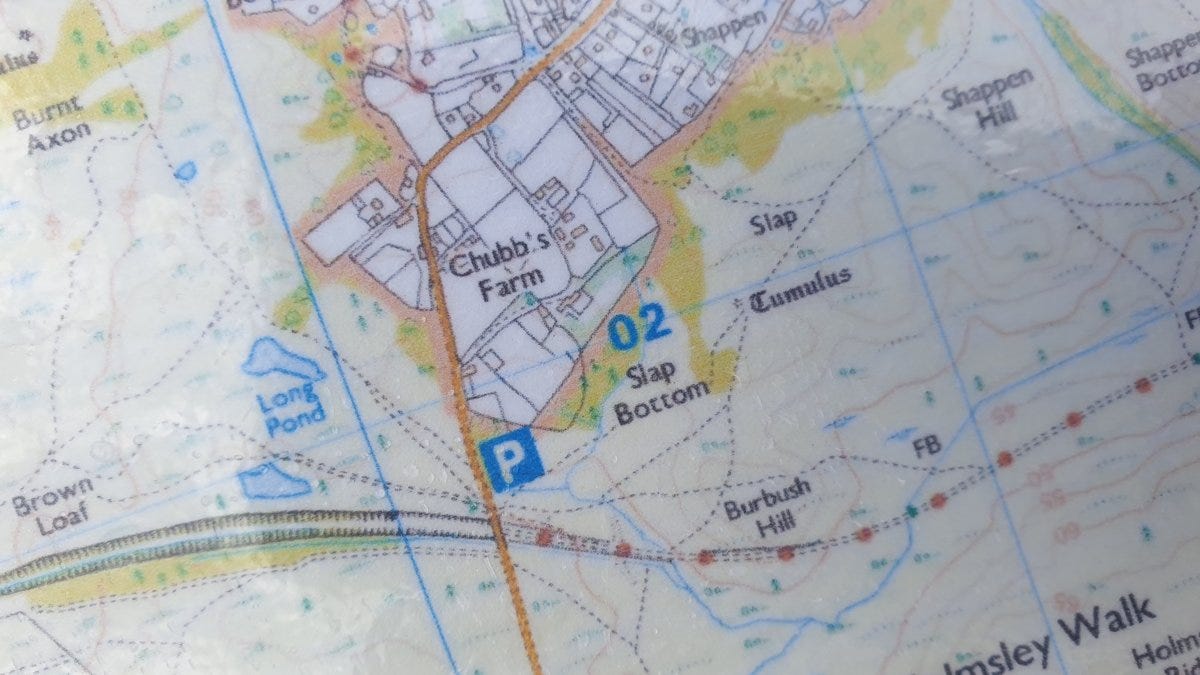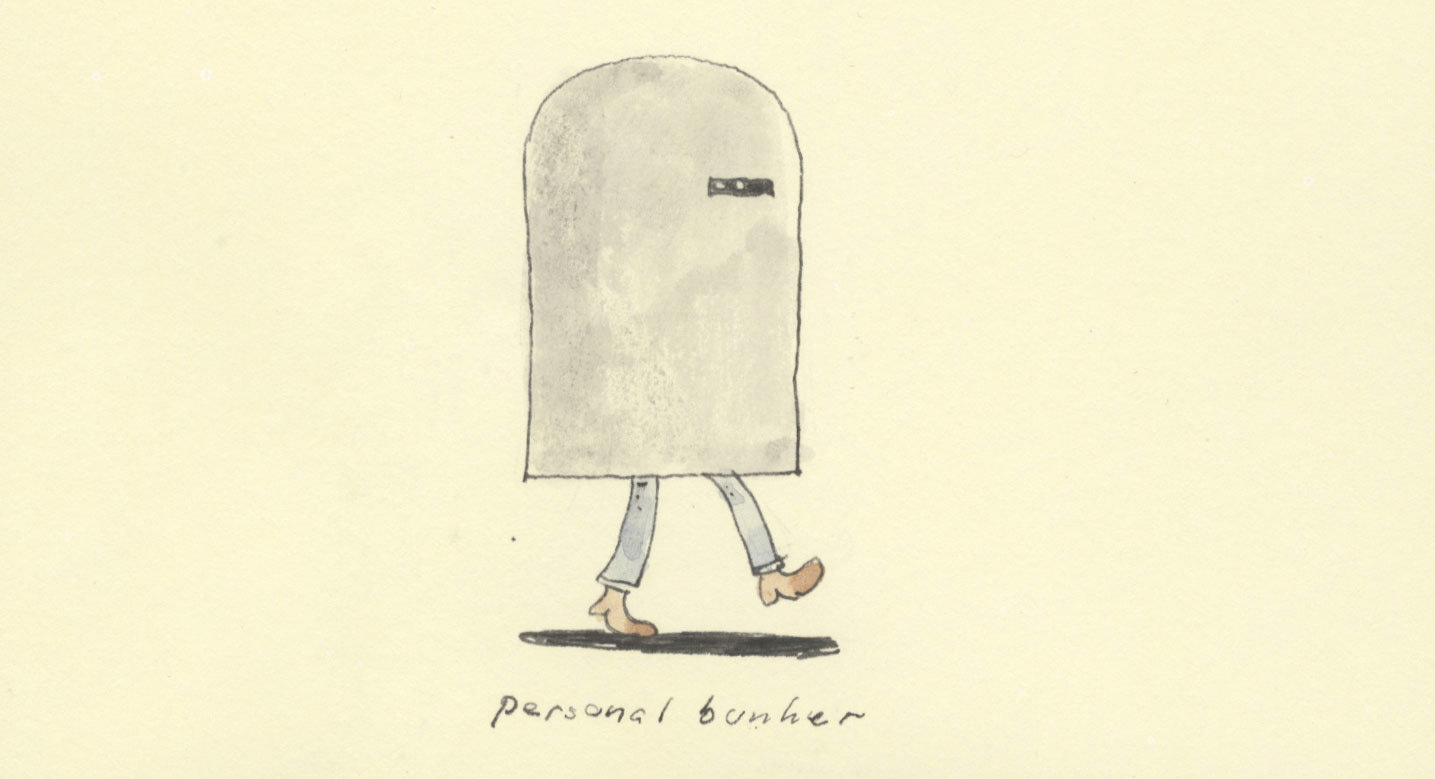Antischismogenetic Equifinality
Today’s story is little more than the smashing together of two fancy words that I learned recently. (And, actually, one of them I made up)
Happy Friday!
And welcome to the last of my winter stories: summer starts on Sunday (at least, it does if you follow the iron-willed drumbeat law of British Summer Time).
For many years, I have proposed that all Britons mark the transition into our Summer Time with that most British of summer repasts, the wet sausage barbecue.
It might feel not merely ambitious, but the epitome of audacious to haul out the coals on a drizzly Sunday in March, but that’s what freedom feels like, people — throw off your chains!
Barbecue entered the English language in 1661 with dubious thanks to Edmund Hickeringill, a duck-shooting clergyman and soldier, who wrote an extremely offensive epic poem about the people of Guiana that included the following lines:
[…] usually their Slaves, when captive ta’ne,
Are to the English sold; and some are slain,
And their Flesh forthwith Barbacu’d and eat
By them, their Wives and Children as choice meat.
Not an extremely appetising menu for your Sunday fare. I’ll stick to aubergine, thanks.
Oh, for those of you new to these pages, hello 👋 My name is David and I’m a writer, outdoor instructor and cyclist-at-large with Thighs of Steel. I write stories that help you and me understand the world (and ourselves) a little better.
Sometimes I follow rabbit holes a little too far down.
Welcome to edition 353.
Antischismogenetic Equifinality
Today’s story is little more than the smashing together of two fancy words that I learned recently.
(And, actually, one of them I made up.)
Antischismogenesis
Schismogenesis is the word for a process where apparently close neighbours somehow end up defining themselves in direct opposition to the other.
Protestant and Catholic, Conservative and Labour, Mods and Rockers, Reds and Blues: despite sharing so much, we lurrrrve to amplify our divisions and differences.
In Mistakes Were Made (But Not By Me), social psychologists Carol Tavris and Elliot Aronson show how tenaciously we tend to cling onto our sides of the argument (or indeed angle on reality), no matter what evidence or alternative is put before us.
As the editors at Wikipedia succinctly summarise:
It describes a positive feedback loop of action and self-deception by which slight differences between people’s attitudes become polarised.
Fuelled by cognitive dissonance and the confirmation bias, that’s (at least one element of) schismogenesis in action.
Antischismogenesis is my made up word for the reverse process: a divided people finding — and building upon — common ground.
(Or at least the ability to notice where difference exists and retain the openness of mind to continue to listen.)
While antischismogenesis does happen naturally — chuck a couple of reasonably open-minded, relaxed humans together and it’s surprising what common ground they’ll find. What, you love pizza too?! — it can seem that schismogenesis is the weightier force, particularly insidious as (for most if not all people) it rarely happens with malice aforethought.
What we need is a concept that will guide us towards, not malice, but benevolence aforethought…
Equifinality
Equifinality is the fancy word for ‘there’s more than one way to skin a cat’ (or, indeed, that gruesome idiom’s even more graphic progenitor: ‘there are more ways of killing a cat than choking it with cream’).
Equifinality is almost a state of mind.
There so are many different ways of ending up with similar-looking results that it’d be INSANE to judge anyone because they aren’t doing it exactly like you or because they don’t look like you or talk like you or even think like you.
Sometimes you’ve got to let them do it their way.
In fact, you could say that the spirit of equifinality is exactly what we need to find in order to rebuild our communities through antischismogenesis.
What we need is a mouthful: antischismogenetic equifinality.
Go on, give it a try — if nothing else, it’s fun to wrap your tongue around.
How we actually do antischismogenetic equifinality is another matter entirely.
The Discerning Traveller’s Comprehensively Empty Guide To Antischismogenetic Equifinality (On A Shoestring)
As it’s a concept that I just made up, there is no behavioural toolkit for antischismogenetic equifinality, but I bet it’d include all the usual tricks of the communication trade:
Learn about the ordinary human tendency for schismogenesis between in-groups and out-groups. Done ✔️
Notice where schismogenesis has nurtured division in your own life. What kind of people are in your circle of friends, colleagues and nodding acquaintances?
Notice when you are actively manufacturing division from others. Don’t forget that division isn’t all blazing rows and fisty-cuffs. It’s most often as mundane and insidious as silent prejudice.
What’s your internal monologue when you pass a member of the out-group in the street? How about when you hear your favourite worst enemy on the radio or read about their latest egregious behaviour in the news? If you’re anything like me, you’ll despatch with relish the three Ds: dismiss, deny and denigrate.
Learn about and notice your own susceptibility to the cognitive biases that make us all think that we’re not only the best, but also sparkling exceptions to any and every rule. Cognitive biases, our mental blind spots, are like a baseball bat to the knees of equifinality.
Interrupt the opening of any division with extra-ordinary behaviours, which usually begins with you reaching out in a spirit of curiosity. Nonjudgemental curiosity is the practical precursor of equifinality.
Ask open questions (instead of leading questions), listen for what others want to communicate (instead of what you want to hear) and check that you have understood others as they want to be understood (instead of how you’d like to label them).
Employ random acts of kindness to set spinning a virtuous cycle of connection between strangers.
But I bet you’ve got a million other ideas and I’m totally here for them. Hit reply to this email or…
And your friends, colleagues and nodding acquaintances are smart too, so why not…
~
The author would particularly like to thank Davids Graeber and Wengrow and, as ever, the editors at Wikipedia.
Days Of Adventure 2023: 9
The baker’s Brown Loaf, the neurologist’s Burnt Axon, and the makeup artist’s Slap, stopping for tea at the unreconstructed Slap Bottom.
🟢🟢🟢🟢🟢🟢🟢🟢🟢
Three Small Big Things At The End
1. The One-Wheeled Chinese Wheelbarrow
Is Low-Tech Magazine (tagline: ‘doubts on progress and technology’) my new favourite solar-powered website?
Certainly, with article titles like What if We Replace Guns and Bullets with Bows and Arrows?, Fascine Mattresses: Basketry Gone Wild and The Revenge of the Hot Water Bottle, it’s hard not to love.
But here now is a picture of something I never knew existed, taken from a piece on the history of the one-wheeled Chinese wheelbarrow:
The device is so efficient that it can take the place of three men; moreover, it is safe and steady when passing along dangerous places (cliff paths, etcetera). Ways which are as winding as the bowels of a sheep will not defeat it.
Thanks to GC (👋) for introducing me to LTM. Yes, I did get sidetracked.
2. Let’s Not Doomspread Loneliness
This Quanta story by Marta Zaraska follows the classic doomspreading journalistic model so you’ll have to scroll right to the bottom to find the work that is being done to help support people who feel chronic loneliness, but, if you can avoid getting caught in the cheap attention trap, it’s an interesting read.
Example of anxiety-inducing sensationalist doomspreading:
10 hours without social contact is enough to elicit essentially the same neural signals as being deprived of food 🤮
Example of constructive storytelling, from the last two paragraphs in the article:
While interventions such as cognitive behavioural therapy, promoting trust and synchrony, or even ingesting magic mushrooms could help treat chronic loneliness, transient feelings of solitude will most likely always remain part of the human experience. And there is nothing wrong with that, Tomova said.
She compares loneliness to stress: It’s unpleasant but not necessarily negative. ‘It provides energy to the body, and then we can deal with challenges,’ she said. 🥰
In the last 432 words of their 2,000 word article, Marta Zaraska covers four possible solutions for chronic loneliness (which I’ve bolded) and offers a comforting arm around the shoulder for the rest of us.
But how many people will read that far? The first 1,500 words are, by and large, doomspreading, explaining why chronic loneliness is a terrible thing and how difficult an emotion it is for scientists to study, let alone treat.
Take note, journalists, all — writing constructively isn’t hard. It doesn’t even mean removing the darker details, but why not put solutions and that arm around the shoulder up top in the lede? Why wait until you’ve beaten us up already?
I sort of don’t want to know the answer to that question.
If you notice a journalist who opens with doomspreading, do yourself a favour and skip ahead to read the final paragraphs first.
3. Mattias Adolfsson
The art of obsessive whimsey. I really enjoyed his 2009 weathervanes too.
That’s all for this week.
I feel very lucky that I get to sit here and write to all 545 of you, picking up these words from 50 countries around the world.
That includes 8 of you 👋 in Morocco 🇲🇦, where mitochondrial DNA studies have discovered a close ancestral link between the camel-herding Berbers and the reindeer-herding Saami of Scandinavia 🤯 OMG WE ARE SO CONNECTED.
Thank you for reading and I hope you found something to take away with you.
Don’t forget that this newsletter is community supported. It’s easy for you to pay what you feel it’s worth:
There’s also a tier where you can pay £50 or more. Whatever you choose, thank you.
Big love,
dc:





Develop our own 'toolbox' of understanding, and in particular, recognise that nothing happens in isolation. Whatever led to that person, or people's seemingly wild and incoherent attitude did not happen over night.
James Garbarino wrote in relation to understanding violence:
'A series of five or six tools I would put in our box to address the issue of violence. The first is an ecological perspective on human development. When you look at research on human development with your eyes wide open, you find rarely, if ever, a simple cause-and-effect relationship. Cause-and-effect relationships are always shaped and conditioned by culture, society, community, sex, race, ethnicity, and historical period.'
I think this extends to all forms of violence, and perceived violence, not just physical which he refers to here.
Lost boys: Why our sons turn violent and how we can save them
https://www.ncbi.nlm.nih.gov/pmc/articles/PMC2722594/